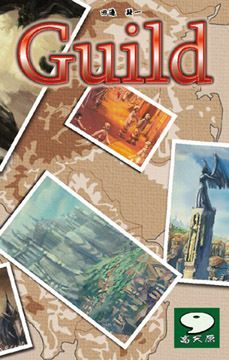Welcome to the wild world of Guild! This is a review you’ll want to bookmark. I’ve spent hours hunched over the game board with my buddies, coffee in one hand, cards in the other. My mission today? To spill the beans on whether Guild is worth the tabletop real estate. So, grab a snack, sit back, and let’s chat about the good, the bad, and the hilariously unlucky.
How It Plays
Setting Up
First, unfold the board and place it on the table. Shuffle the cards and put them in the center. Each player picks a color and gathers their pieces. Give everyone a starting resource pack. Remember, my buddy Fred always forgets his resources and wonders why he’s losing!
Gameplay
Players take turns drawing a card, then strategize their move. You can build, trade, or negotiate. The choices are yours, but be warned – my friend Sarah always gets sneaky with those trades, so watch out!
Winning the Game
The first player to reach the victory point threshold wins. It’s a race! But with strategy. Remember, luck shouldn’t decide the winner. On my first playthrough, I lost because I banked on a lucky draw. Lesson learned!
Want to know more? Read our extensive strategy guide for Guild.
Game Mechanics and the Notorious Guild: A Love-Hate Relationship
I must confess, the heart of any board game is its mechanics, much like the wheels on a bicycle. A game without smooth mechanics leaves you stuck in the mud, but with the right ones, you’re breezing down the hill, wind in your hair, dodging imaginary cars and squirrels. Now, let’s talk about some mechanics that make ‘Guild’ truly special, or as my buddy Tom likes to say, “a delightful disaster.”
Guild is like a medieval town job fair. You take on roles like a merchant, knight, or wizard, and your job is to gather enough guild points before your friends do. There’s a brilliant mechanic of trade and negotiation that gets everyone as invested as a cat with a laser pointer. However, there’s also a teensy-weensy element of roulette that can mess up your whole strategy if you’re not lucky. If your luck is anything like mine, well, let’s just say you better be good at apologizing for flipping the table.
The strategic choice-making and guild expansion are impressive. But remember when I mentioned the luck factor? It can swing the game like a pendulum and leave you feeling more frustrated than when you realize you’ve been charging an unplugged phone. A bit of bad luck, and your knight might end up being more of a jester. So, if you despise luck-driven situations, prepare for some gnashing of teeth.
Next up, we’ll explore how ‘Guild’ fosters player interaction, and let me tell you, it’s as dramatic as a soap opera starring your mother-in-law.
How Guild Encourages Player Interaction
Let me tell you about a Friday night with my friends and Guild, the board game where alliances are made and broken quicker than a pie disappears at a potluck. Guild’s creators know how to stir the pot, making player interaction a cornerstone of the game. You gotta work with, or against, your fellow players to build the best guild. I remember when my buddy Pete tried to backstab me right as we were about to win—classic Pete! He almost got away with it, too. The game’s design ensures you can’t just sit back and relax; you’ve got to be in the thick of it.
Guild’s player interaction is all about negotiation and alliance shifts. You can almost hear the wheels turning in players’ heads as they try to outsmart each other. Whether you’re trading resources, forming temporary alliances, or plotting your devious come-from-behind victory, Guild keeps you on your toes and ensures no two games are the same. It doesn’t just throw players onto a board and wish them luck—nah, this game makes you build, plot, and sometimes even grovel for that one card you need.
Even when you’re on the ropes, you can talk your way into someone’s good graces—only to betray them later! Trust me, in Guild, it’s all about reading your friends and playing your cards right, literally and metaphorically. Stay tuned, cause next, we’re diving into the eye-candy world of Guild’s artwork and components!
The Stunning Artwork and Components of Guild
Let me tell ya, when my friends and I cracked open the box of Guild, we were immediately mesmerized. The artwork is like stepping into a beautifully illustrated fantasy novel. Seriously, if I had a club, I’d name it after the artist. The game board is a work of art in itself, with intricate details in every nook and cranny. My buddy Dave even joked that he wanted a poster-sized version for his living room, and I don’t think he was kidding.
The components are equally impressive. From sturdy cards that laugh in the face of coffee spills (thanks, Becky!) to the chunky wooden tokens that are oddly satisfying to hold, everything feels premium. I even caught my pal Sam using one of the tokens as a stress ball during our last game—multifunctional, eh?
Even the box insert is well thought out, which, as any board gamer knows, can be a rare gem. No more cramming bits and bobs into tiny spaces or finding pieces in the couch cushions. Everything has its place and fits snugly.
However, not every rose is without its thorn. The rulebook could use a few more diagrams and examples. Not a deal-breaker, but it did lead to a few heated discussions about obscure rules. You’d think we were debating politics!
As I finish up admiring Guild’s lovely art and components, my mind wanders to the topic of replayability. Will Guild create endless table magic? Let’s see in the next section!
Exploring Guild’s Replayability: The Game That Keeps on Giving!
Replayability often makes or breaks a board game’s place on my shelf. Guild, I must say, has earned its keep. You know how some games lose their charm faster than my patience during a team-building exercise? Not Guild! It keeps players on their toes with each playthrough, and that’s saying a lot considering my friends’ attention spans rival that of a goldfish.
The secret sauce in Guild’s replayability lies in its dynamic setup and ever-changing scenarios. No two games are the same, and that’s a promise! With a variety of guilds to explore and unique missions to tackle, boredom is simply not invited to the party. You might find yourself plotting with the Alchemist Guild this round and strategizing for the Merchant Guild the next time. Trust me; it never gets old!
Another gem in Guild’s crown is the scope for different strategies. You have to adapt and choose wisely because what worked last time might not be the best choice now. I once tried the “blind squirrel finds a nut” approach, but that failed spectacularly when my opponents outsmarted me. Lesson learned!
The range of characters and options keeps even the most seasoned players engaged and guessing. And let’s not forget those curveballs the game throws your way! They make for unexpected twists that even my poker-faced uncle can’t predict.
So, should you give Guild a whirl? Absolutely! It’s a game that begs to be played over and over without losing its luster. Just beware, you might lose track of time—and friends who can’t handle the competition!
Conclusion
Wrapping up this review, Guild offers a fun mix of strategy and player interaction with impressive artwork. While the rulebook could be clearer, the game’s dynamic nature ensures plenty of replayability. Just don’t let the luck element ruin your strategy plans! Overall, Guild is a solid choice for board game nights with friends, but not for those who dislike a bit of chaos.


